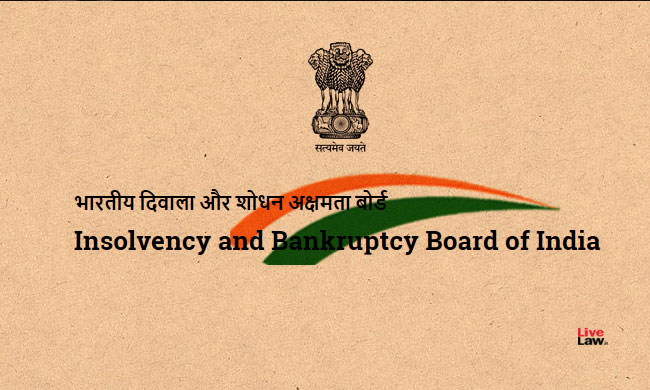Sanctioned: Virgin Active’s Restructuring Plans – Insolvency/Bankruptcy/Re-structuring

To print this article, all you need is to be registered or login on Mondaq.com.
Overview
On 12 May 2021, the High Court sanctioned three
inter-conditional restructuring plans, under the Part 26A of the
Companies Act 2006, for certain English subsidiaries of the Virgin
Active group, despite major opposition of certain landlords.1 In the landmark decision, the High
Court exercised its discretion to cram-down multiple classes of
dissenting landlords in each plan, compromising their claims.
This client alert is relevant to disrupted, stressed, and
distressed companies, as well as their directors and creditors,
including landlords.
Key takeaways
1. Valuation: the restructuring plan procedure
will not be undermined by lengthy valuation disputes. A desktop
valuation may be used to value a plan company — there is no
absolute obligation for market testing to be carried out. Where the
valuation of a company is disputed, competing valuation evidence of
the alternative counterfactual should be provided to the court, as
only evidence placed before the court will be assessed when
considering the relevant restructuring plan.
2. The court’s discretion:when exercising
its discretion to use the cross-class cram-down mechanism, the
court will attach little or no weight to lower-ranking classes of
creditors who would be out of the money. Creditors who are in the
money should decide the division of value or future benefits that
the business may generate post-restructuring.
The restructuring plans
The proposed restructuring plans related to (i) Virgin Active
Holdings Limited (VAHL), (ii) Virgin Active Limited (VAL), and
(iii) Virgin Active Health Clubs Limited (VAHCL) (collectively, the
“Plan Companies”). The Plan Companies are key English
subsidiaries of the Virgin Active group’s European and Asia
Pacific sub-group (the “Group”). The stakeholders of the
restructuring plans were as follows:
- Secured Creditors – creditors to whom
the Group owed over £200 million under a senior facilities
agreement. By the terms of the plans, there would be no haircut,
the maturity of the loans would be extended by three years and
various amendments would be made to the senior facilities
agreement. All of the Secured Creditors voted in favour of each
plan (i.e., 100%). - Landlords – 46 landlords with a total of
67 leases, separated into five classes, based on the profitability
of their respective leases to the tenants. The treatment of each
Landlord class under each plan, and their voting, was as
follows:
|
Landlord class |
Treatment under the plans |
Votes in favour of each plan |
|
Class A (covered sites that were most profitable and critical to the |
|
VAHL & VAL: 100% VAHCL: 98.91% |
|
Class B (covered profitable sites but were less critical to the |
|
VAHL: 42.64% VAL:44.73% VAHCL: 19.23% |
|
Class C (covered sites that were minimally profitable prior to the |
|
VAHL & VAL: 0% VAHCL: 66.6% |
|
Class D (covered sites that were loss-making and that the Group did |
|
VAHL, VAL & VAHCL: 0% |
|
Class E (covered sites that were loss-making and that the Group did |
|
VAHL & VAL: 0% VAHCL: 8.24% |
The Landlords all retained their rights to determine their
leases, by forfeiture or otherwise following established principles
in case law in respect of company voluntary arrangements and
schemes of arrangement.2
- General Property Creditors: unsecured
creditors, who are not landlords, but whose claims relate to
properties used by the Group. Under the plans, these claims were
compromised in exchange for payment of the restructuring plan
return. With respect to the VAHL and VAHCL plans, 0% of the General
Property Creditors voted in favour, and with respect to the VAL
plan, only 6.89% voted in favour. - Shareholders: not compromised by the plans or
included as a voting class. The Shareholders will retain their
equity interests and provide financial support, including by way of
loans (£45 million, pre- and post-implementation), equity (up
to £6 million), and waiving an applicable licence fee.
Use of the cross-class cram-down
With the Secured Creditors and Class A Landlords voting almost
unanimously in favour of the plans, the Plan Companies asked the
court to exercise its discretion to use the cross-class
cram‑down mechanism to sanction the plans. The questions for
the court to consider were:
1. Condition A – the “no worse off”
test: if the restructuring plans were sanctioned, would
any members of the dissenting class be any worse off than they
would be in the event of the relevant alternative?
2. Condition B: had each restructuring plan
been approved by 75% of those voting in any class that would
receive a payment, or have a genuine economic interest in the
company, in the event of the relevant alternative?
3. The court’s general discretion: in all
the circumstances, should the court exercise its discretion to
sanction the restructuring plans?
The court held that there was no dispute that Condition B was
satisfied, as the Secured Creditors and Class A Landlords approved
the plans.
Condition A – the “no worse off” test
The court must be satisfied that the dissenting creditors would
be “no worse off” in the relevant alternative. The
“no worse off” test may be approached by identifying the
alternative scenario that is “most likely” to occur and
determining the associated outcome for the creditors in that
scenario. The court stated that such exercise is
“inherently uncertain because it involves the court in
considering a hypothetical counterfactual which may be subject to
contingencies and which will, inevitably, be based upon assumptions
which are themselves uncertain“.3
In this case, the relevant alternative was accepted to be a
trading administration that involved the accelerated sale of the
regional businesses of the Plan Companies. Valuations are key in
determining whether a creditor will be worse off in the relevant
alternative. The valuations used in this case were desktop
valuations that primarily used discounted cashflow methodology. The
opposing landlords argued that the estimated outcome for the
creditors under the relative alternative was unreliable as there
was no market testing process. The court held:
- the use of restructuring plans should not be undermined by
lengthy valuation disputes. The preservation of the protection of
dissenting creditors (provided by the “no worse off
test”) and the court’s general discretion is
important. - there is no absolute obligation to conduct a market testing
process. The question is whether it was necessary or practicable in
the circumstances to have done so. Any market testing in this case
would need to have been treated with “extreme caution”,
as the market could not have been less favourable. It would have
involved the offering of the business at a time that the sector was
closed for an indeterminate period due to the pandemic. - the valuation and calculations were reasonable and capable of
being relied upon to determine whether to sanction the plans. - only evidence before the court can be assessed and any creditor
wishing to challenge the valuation, demonstrating a better deal
could be obtained in the relevant alternative, should adduce
evidence to that effect. This was not done in this case. - no member of any dissenting class would be worse off under the
plans than in the relevant alternative of an administration. Under
the terms of the restructuring plans, they would receive the
restructuring plan return, which was up to 20% more than they would
have received in an administration. Further, the restructuring plan
return would likely be paid sooner than any administration
dividend.
The court’s general discretion
The legislation provides little guidance on the factors the
court should consider when exercising its discretion to sanction a
restructuring plan using the cross-class cram-down. It was argued
by the opposing landlords that the Shareholders, in retaining their
shares to the exclusion of the landlords, would obtain value from
the restructuring in the form of a restructuring surplus
(i.e., the enhancement in value of the shares in the Plan
Companies). In the relevant alternative of an administration, the
Shareholders would rank behind the Landlords (unsecured creditors)
and their shares would be worthless. Any treatment that enables the
Shareholders to obtain value to the exclusion of the unsecured
creditors that rank ahead of them in the insolvency waterfall is
contrary to the principles of insolvency law.
The court held that:
- a restructuring plan may provide that different treatment and
substantial value be given to some, but not all, creditors who are
out of the money, as referenced in DeepOcean. - creditors who are out of the money in the relevant alternative
can be bound by a plan that compromises their claims without being
given the opportunity to vote (as provided by section 901C(4) of
the Companies Act 2006). In circumstances where out of the money
creditors are invited to vote, their vote should not weigh heavily
or at all in the decision of the court as to whether to sanction
the plan and cram them down. In this case, the opposing landlords
would be out of the money in the relevant alternative and as such
their votes carry little or no weight. - creditors who are in the money should decide how the value and
potential future value that the business and assets may generate
post-restructuring should be divided. There may, however, be limits
to this principle. In this case, there were justifiable commercial
reasons for allowing the Shareholders to retain their equity, as
the Shareholders were providing new money on better terms than
would otherwise have been available in the market (and this was
distinguishable from the waiver of existing liabilities). - a restructuring plan can be used as opposed to a company
voluntary arrangement, where it is more likely to achieve the
rescue of a company in the interests of the company’s
stakeholders generally.
Commentary
The reasoned judgment given by Snowden J. provides useful
guidance on the practical aspects of the restructuring plan and was
the first true test of the cross-class cram-down mechanism. The
court made clear that it is for creditors who are in the money to
determine the division of value that a business may generate
post-restructuring and, accordingly, their vote is afforded more
weight. Out of the money creditors are not required by legislation
to vote, and, if they are invited to do so little or no value
should be attached to their vote — unless evidence that they
are not out of the money in the relevant alternative is adduced to
the court. Further, this decision does not impute the absolute
priority rule, which provides that junior creditors cannot be paid
before all senior creditors are paid in full, into English law.
Though the court acknowledged that there may be limits to the value
out of the money creditors or shareholders may receive.
This was first time the restructuring plan has been used to
compromise lease obligations. Companies may begin to favour this
tool to combat their unviable real estate portfolios over company
voluntary arrangements. The court made clear that that there is
nothing inappropriate about companies making use of the
restructuring plan over company voluntary arrangements if it is
more likely to achieve the rescue of the company in the interests
of its stakeholders generally.
Footnotes
1 Re Virgin Active Holdings Ltd, Virgin
Active Ltd and Virgin Active Health Clubs Ltd [2021] EWHC 1246
(Ch)
2 Discovery(Northampton) v Debenhams
Retail Ltd [2020] BCC 9 in relation to company voluntary
arrangements and Re Instant Cash Loans Ltd [2019] EWHC 2795
(Ch) with respect to schemes of arrangement
3 Re Virgin Active Holdings Ltd, Virgin
Active Ltd and Virgin Active Health Clubs Ltd [2021] EWHC 1246
(Ch) at [108
Because of the generality of this update, the information
provided herein may not be applicable in all situations and should
not be acted upon without specific legal advice based on particular
situations.
© Morrison & Foerster LLP. All rights reserved









